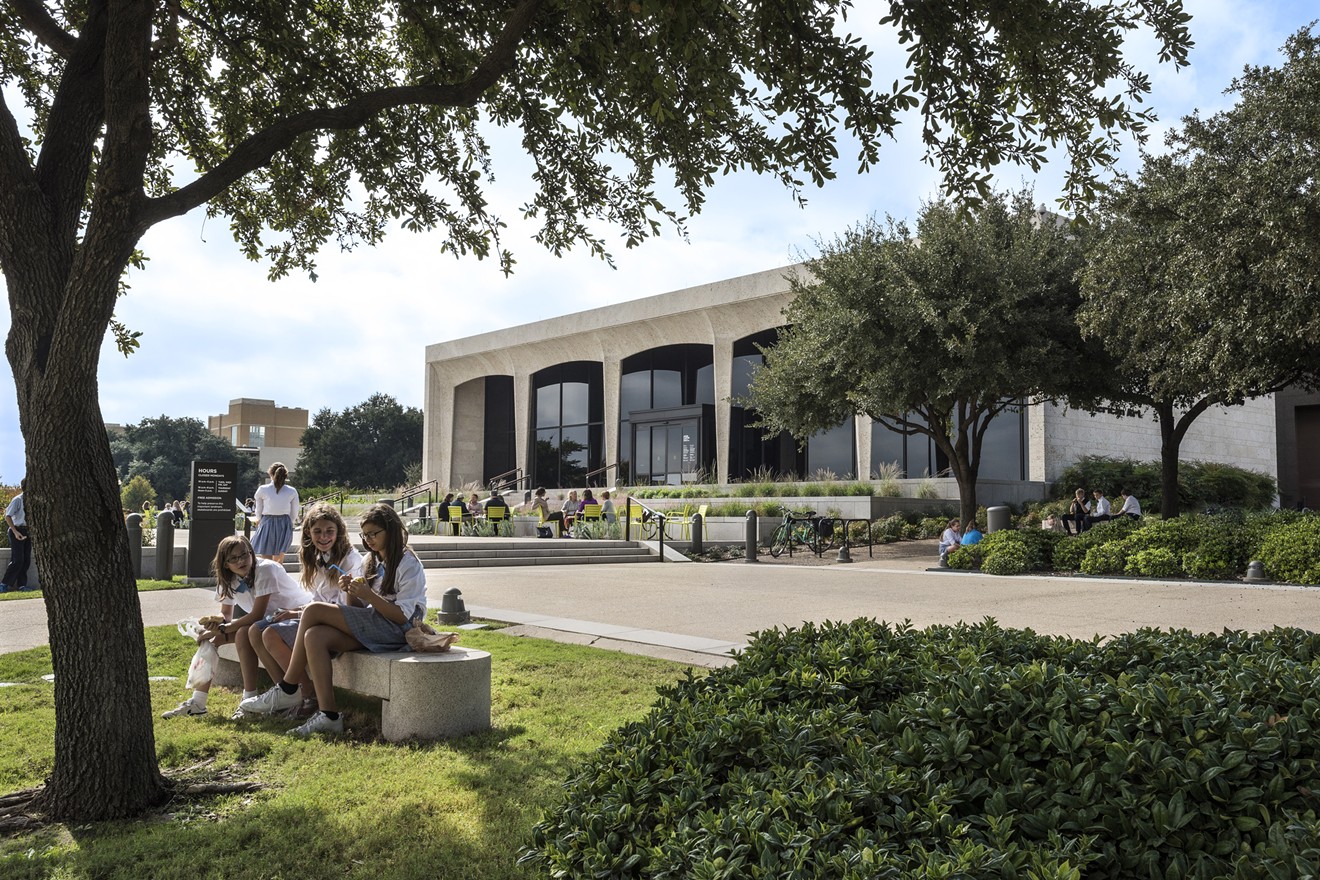The Walton name is recognized around the world because of Wal-Mart, the department store Sam Walton founded in 1962 in Bentonville, Arkansas, and which has become the largest private employer and largest company by revenue in the world under his children's leadership. But his daughter and heir Alice Walton is seeing to it that the name is associated with more than big business and discounts.
Walton, who has a special interest in American art, served on the board of the Amon Carter Museum of American Art from 2004-2015 after developing a friendship with the museum's founder and president, Ruth Carter Stevenson. Yesterday it was announced that through the Walton Family Foundation, a nonprofit group established in '88, Alice Walton has endowed the museum with $20 million.
The gift to the Amon Carter is the largest in the museum's history, according to the press release issued Tuesday. The money will be doled out over the course of five years and was specifically allocated to exhibition development and educational initiatives.
Andrew Walker, director of the Amon Carter, says the museum already has a strong foundation in these areas, but they can be difficult ones to fundraise for, which stymies experimentation.
"You can spend a lot of time trying to develop funds for these projects, and you don’t get to innovate because you’re chasing the dollar for that moment," he says.
The endowment was presented by Walton in memory of Stevenson, who died in 2013 at the age of 89.
"It was a very close, almost family-like friendship that they had," Walker says. "It really began, as I remember the story, in the 1990s through the National Gallery of American Art. [They bonded] over their passion for American art — this real, shared belief that pictures and images and visual life can lead to social change."
The type of social change that Walton and Stevenson were interested in inspiring through art, Walker believes, was an increased awareness of Americans' commonalities.
"They believed strongly that American art at its highest achievement was able to tell stories whether they were aesthetic or more narrative that linked to the shared experience of the people of the country," he says.
Walker describes Stevenson as a mentor of sorts to Walton, who was just beginning to build her private art collection when they met. At that point, Stevenson had been working closely with the Amon Carter Museum, which she founded in '61, for decades.
The museum is named for Stevenson's father, Amon G. Carter, who was the creator and publisher of the Fort Worth Star-Telegram. Carter spent the last years of his life building the collection and laying the groundwork for the museum, which has an emphasis on works from the 1820s-1940s and counts many works depicting the Old West by Frederic Remington and Charles M. Russell among its permanent collection.
One of Stevenson's primary focuses during her life was engaging the public through educational initiatives at the museum, whether that meant public programs, art-making events or outreach to students and teachers.
During Walton's time on the board at the Amon Carter Museum, Walker says she introduced "a sense of creativity but also challenge and innovation."
Initially her interest was in continuing to build the museum's collection of masterworks, but in her last few years as a board member she became more supportive of efforts to work with living artists. As a testament to her impact in that area, a rainbow sculpture made of 80 miles of thread, by working Dallas artist Gabriel Dawe, is currently on view in the museum's atrium.
"She was encouraged about creating this connection between history and contemporary life," Walker says.
In 2011, Walton opened her own museum with funds from the Walton Family Foundation, Crystal Bridges Museum of American Art in Bentonville, Arkansas, where Wal-Mart is still headquartered today. Walker praises her for opening a museum in a region which "hasn’t had wide exposure to the visual arts."
The Walton Family Foundation grants money in three areas: K-12 education, the environment and economic-development projects in the family’s home state of Arkansas. However, it is worth noting that the Waltons have sometimes come under fire for how they do business — even in the nonprofit world.
In 2014, Forbes reported that the Waltons do not contribute any of their personal wealth to their nonprofit. A review of 23 years of tax returns showed that Alice Walton, who is the second wealthiest woman in the world, with a net worth of $35.3 billion, had made no individual contributions to the foundation in that time.
"The foundation has been funded over the years, namely by tax-avoiding trusts established with assets provided by the late Sam, Helen and John Walton or their estates," the story reads. "These [trusts] ... are specifically designed to help ultra-wealthy families avoid estate and gift taxes."
Nevertheless, the foundation donates a great deal of money. In 2015, it revealed it would make grants totaling $2 billion over the course of five years.
Several years after opening Crystal Bridges, Walton left her position on the board at the Amon Carter Museum. But the Walton Family Foundation's recent gift shows that she has not forgotten her time there.
Walker describes the endowment as a symbol of the important role women have played in the art world.
"Over the 20th century, many museums, not just American art museums, have depended upon the leadership of strong, thoughtful and innovative women," he says. "This honoring of Ruth by Alice just accentuates that."
[
{
"name": "Air - MediumRectangle - Inline Content - Mobile Display Size",
"component": "18855504",
"insertPoint": "2",
"requiredCountToDisplay": "2"
},{
"name": "Editor Picks",
"component": "17105533",
"insertPoint": "4",
"requiredCountToDisplay": "1"
},{
"name": "Inline Links",
"component": "18349797",
"insertPoint": "8th",
"startingPoint": 8,
"requiredCountToDisplay": "7",
"maxInsertions": 25
},{
"name": "Air - MediumRectangle - Combo - Inline Content",
"component": "17105532",
"insertPoint": "8th",
"startingPoint": 8,
"requiredCountToDisplay": "7",
"maxInsertions": 25
},{
"name": "Inline Links",
"component": "18349797",
"insertPoint": "8th",
"startingPoint": 12,
"requiredCountToDisplay": "11",
"maxInsertions": 25
},{
"name": "Air - Leaderboard Tower - Combo - Inline Content",
"component": "17105535",
"insertPoint": "8th",
"startingPoint": 12,
"requiredCountToDisplay": "11",
"maxInsertions": 25
}
]













